#Smart Lander for Investigating Moon
Explore tagged Tumblr posts
Text
Japan's Moon lander has produced another surprise by waking up after the two-week lunar night, the country's space agency said Monday. The unmanned Smart Lander for Investigating Moon (SLIM) touched down last month at a wonky angle that left its solar panels facing the wrong way. As the Sun's angle shifted, it came back to life for two days and carried out scientific observations of a crater with a high-spec camera, the Japan Aerospace Exploration Agency (JAXA) said.
Continue Reading.
70 notes
·
View notes
Text
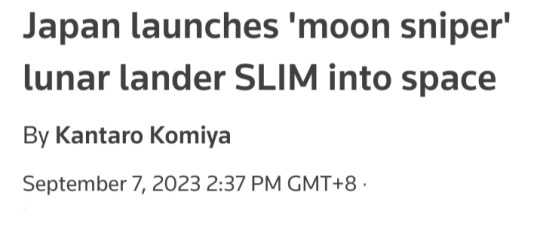

TOKYO, Sept 7 (Reuters) - Japan launched its lunar exploration spacecraft on Thursday aboard a homegrown H-IIA rocket, hoping to become the world's fifth country to land on the moon early next year.
Japan Aerospace Exploration Agency (JAXA) said the rocket took off from Tanegashima Space Center in southern Japan as planned and successfully released the Smart Lander for Investigating Moon (SLIM).
Unfavourable weather led to three postponements in a week last month.
Dubbed the "moon sniper," Japan aims to land SLIM within 100 metres of its target site on the lunar surface.
The $100-million mission is expected to start the landing by February after a long, fuel-efficient approach trajectory.
"The big objective of SLIM is to prove the high-accuracy landing ... to achieve 'landing where we want' on the lunar surface, rather than 'landing where we can'," JAXA President Hiroshi Yamakawa told a news conference.

The launch comes two weeks after India became the fourth nation to successfully land a spacecraft on the moon with its Chandrayaan-3 mission to the unexplored lunar south pole.
Around the same time, Russia's Luna-25 lander crashed while approaching the moon.
Two earlier lunar landing attempts by Japan failed in the last year.
JAXA lost contact with the OMOTENASHI lander and scrubbed an attempted landing in November.
The Hakuto-R Mission 1 lander, made by Japanese startup ispace (9348.T), crashed in April as it attempted to descend to the lunar surface.
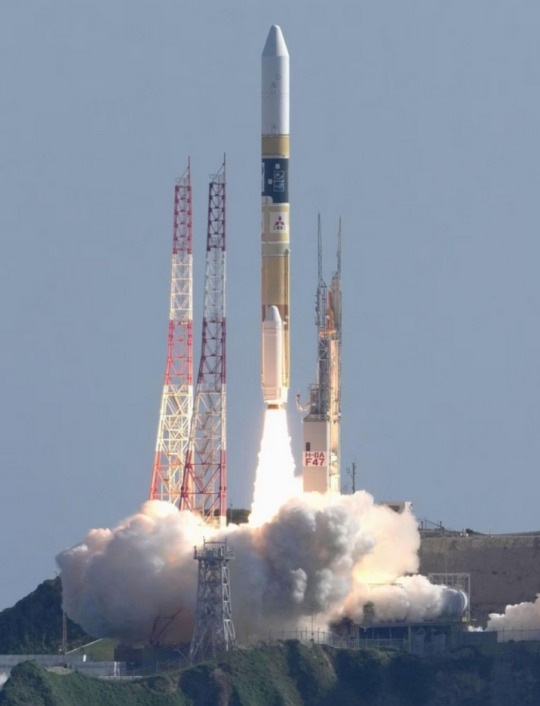
SLIM is set to touch down on the near side of the moon close to Mare Nectaris, a lunar sea that, viewed from Earth, appears as a dark spot.
Its primary goal is to test advanced optical and image processing technology.
After landing, the craft aims to analyse the composition of olivine rocks near the sites in search of clues about the origin of the moon. No lunar rover is loaded on SLIM.
Thursday's H-IIA rocket also carried the X-Ray Imaging and Spectroscopy Mission (XRISM) satellite, a joint project of JAXA, NASA and the European Space Agency.
The satellite aims to observe plasma winds flowing through the universe that scientists see as key to helping understand the evolution of stars and galaxies.

Mitsubishi Heavy Industries (7011.T) manufactured the rocket and operated the launch, which marked the 47th H-IIA rocket Japan has launched since 2001, bringing the vehicle's success rate close to 98%.
JAXA had suspended the launch of H-IIA carrying SLIM for several months while it investigated the failure of its new medium-lift H3 rocket during its debut in March.
Japan's space missions have faced other recent setbacks, with the launch failure of the Epsilon small rocket in October 2022, followed by an engine explosion during a test in July.
The country aims to send an astronaut to the moon's surface in the latter half of the 2020s as part of NASA's Artemis programme.
https://www.reuters.com/technology/space/japan-launches-rocket-carrying-moon-lander-slim-after-three-delays-2023-09-06/
youtube
Japan launches 'Moon Sniper' mission | AFP
7 September 2023
Japan's "Moon Sniper" mission blasted off Thursday as the country's space programme looks to bounce back from a string of recent mishaps, weeks after India's historic lunar triumph.
#H-IIA rocket#Japan#lunar exploration spacecraft#SLIM#moon sniper#Japan Aerospace Exploration Agency (JAXA)#Tanegashima Space Center#Smart Lander for Investigating Moon#Hiroshi Yamakawa#Hakuto-R Mission 1 lander#ispace#Mare Nectaris#X-Ray Imaging and Spectroscopy Mission (XRISM) satellite#JAXA#NASA#European Space Agency#Mitsubishi Heavy Industries#Artemis#space#space rocket#Youtube#Chandrayaan-3 mission#Luna-25 lander#India#Russia#moon#moon landing
25 notes
·
View notes
Text
Japanese X-Ray Satellite to Probe Universe's Largest Structures
A revolutionary satellite is preparing to take to the skies, viewing the hidden parts of cosmos in a new light to reveal stellar explosions and powerful jets streaming from supermassive black holes. First Full-Color Images From Webb Space Telescope XRISM (X-ray Imaging and Spectroscopy Mission), a joint mission between the Japan Aerospace Exploration Agency (JAXA) and NASA, is designed to…
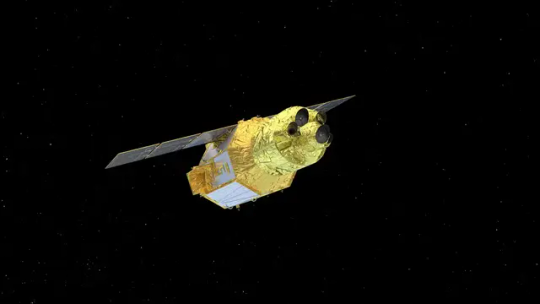
View On WordPress
#European Southern Observatory#Explorers Program#Gizmodo#In spaceflight#Internet#JAXA#Mihoko Yukita#NASA#Ray#Richard Kelley#Smart Lander for Investigating Moon#Space telescopes#Supermassive black hole#Technology#X-ray astronomy satellite#X-Ray Imaging and Spectroscopy Mission#X-ray telescopes
3 notes
·
View notes
Link
Egy nemrég a Holdon landolt japán kutatóeszköz, a SLIM, azaz Smart Lander for Investigating Moon (Intelligens holdkutató leszállóegység) egy fagyos holdéjszaka és némi nyugalmi időszak után váratlanul újra felvette a kapcsolatot a Földdel – írja az index.hu.
0 notes
Text
Japan's Lunar Lander SLIM Survives, But Its Solar Panels Have Failed
Japan has accomplished the remarkable achievement of becoming the 5th nation to land a spacecraft on the moon. The Smart Lander for Investigating Moon (SLIM) arrived safely near Shioli crater on Friday, January 19th, after traversing 110 days from its September 2023 launch at Japan’s Tanegashima space center. SLIM touched down yesterday at 10:20 AM Eastern Time . Its landing expands the…

View On WordPress
0 notes
Photo
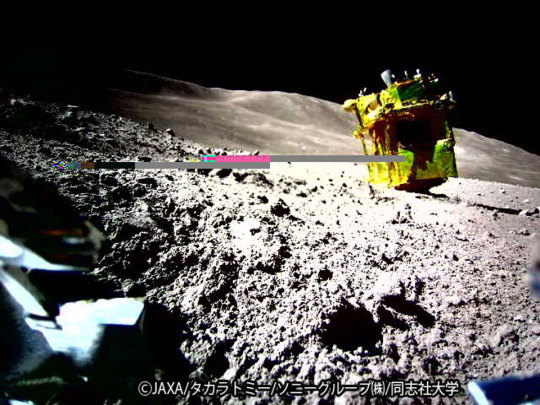
2024 January 30
SLIM Lands on the Moon Image Credit & Copyright: JAXA, Takara Tomy, Sony Co., Doshisha U.
Explanation: New landers are on the Moon. Nearly two weeks ago, Japan's Smart Lander for Investigating Moon (SLIM) released two rovers as it descended, before its main lander touched down itself. The larger of the two rovers can hop like a frog, while the smaller rover is about the size of a baseball and can move after pulling itself apart like a transformer. The main lander, nicknamed Moon Sniper, is seen in the featured image taken by the smaller rover. Inspection of the image shows that Moon Sniper's thrusters are facing up, meaning that the lander is upside down from its descent configuration and on its side from its intended landing configuration. One result is that Moon Sniper's solar panels are not in the expected orientation, so that powering the lander had to be curtailed and adapted. SLIM's lander has already succeeded as a technology demonstration, its main mission, but was not designed to withstand the lunar night -- which starts tomorrow.
∞ Source: apod.nasa.gov/apod/ap240130.html
62 notes
·
View notes
Text
TOKYO -- A Japanese spacecraft touched down on the moon early Saturday, making Japan the fifth country to reach the lunar surface. But officials said they still needed to analyze the pinpoint accuracy of the landing.
Hitoshi Kuninaka, head of the Institute of Space and Astronautical Science, said they believe that rovers were launched and data were being transmitted back to Earth. But there could an issue with the power supply.
The Smart Lander for Investigating Moon, or SLIM, landed at about 12:20 a.m. Tokyo time on Saturday (1520 GMT Friday). Japan follows the United States, the Soviet Union, China and India in reaching the moon.
THIS IS A BREAKING NEWS UPDATE. AP’s earlier story follows below.
Japan’s spacecraft arrived on the surface of the moon early Saturday, but it wasn’t immediately clear if the landing was a success, because the Japanese space agency said it was still “checking its status.”
More details about the spacecraft, which is carrying no astronauts, would be given at a news conference, officials said. If the Smart Lander for Investigating Moon, or SLIM, landed successfully, Japan would become the fifth country to accomplish the feat after the United States, the Soviet Union, China and India.
SLIM came down onto the lunar surface at around 12:20 a.m. Tokyo time Saturday (1520 GMT Friday).
As the spacecraft descended, the Japan Aerospace Exploration Agency's mission control said that everything was going as planned and later said that SLIM was on the lunar surface. But there was no mention of whether the landing was successful.
Mission control kept repeating that it was “checking its status" and that more information would be given at a news conference. It wasn't immediately clear when the news conference would start.
SLIM, nicknamed "the Moon Sniper," started its descent at midnight Saturday, and within 15 minutes it was down to about 10 kilometers (six miles) above the lunar surface, according to the space agency, which is known as JAXA.
At an altitude of five kilometers (three miles), the lander was in a vertical descent mode, then at 50 meters (165 feet) above the surface, SLIM was supposed to make a parallel movement to find a safe landing spot, JAXA said.
About a half-hour after its presumed landing, JAXA said that it was still checking the status of the lander.
SLIM, which was aiming to hit a very small target, is a lightweight spacecraft about the size of a passenger vehicle. It was using “pinpoint landing” technology that promises far greater control than any previous moon landing.
While most previous probes have used landing zones about 10 kilometers (six miles) wide, SLIM was aiming at a target of just 100 meters (330 feet).
The project was the fruit of two decades of work on precision technology by JAXA.
The mission's main goal is to test new landing technology that would allow moon missions to land “where we want to, rather than where it is easy to land,” JAXA has said. If the landing was a success, the spacecraft will seek clues about the origin of the moon, including analyzing minerals with a special camera.
The SLIM, equipped with a pad to cushion impact, was aiming to land near the Shioli crater, near a region covered in volcanic rock.
The closely watched mission came only 10 days after a moon mission by a U.S. private company failed when the spacecraft developed a fuel leak hours after the launch.
SLIM was launched on a Mitsubishi Heavy H2A rocket in September. It initially orbited Earth and entered lunar orbit on Dec. 25.
Japan hopes a success will help regain confidence for its space technology after a number of failures. A spacecraft designed by a Japanese company crashed during a lunar landing attempt in April, and a new flagship rocket failed its debut launch in March.
JAXA has a track record with difficult landings. Its Hayabusa2 spacecraft, launched in 2014, touched down twice on the 900-meter-long (3,000-foot-long) asteroid Ryugu, collecting samples that were returned to Earth.
Experts say a success of SLIM's pinpoint landing, especially on the moon, would raise Japan's profile in the global space technology race.
Takeshi Tsuchiya, aeronautics professor at the Graduate School of Engineering at the University of Tokyo, said it was important to confirm the accuracy of landing on a targeted area for the future of moon explorations.
“It is necessary to show the world that Japan has the appropriate technology in order to be able to properly assert Japan's position in lunar development,” he said. The moon is important from the perspective of explorations of resources, and it can also be used as a base to go to other planets, like Mars, he said.
SLIM is carrying two small autonomous probes — lunar excursion vehicles LEV-1 and LEV-2, which will be released just before landing.
LEV-1, equipped with an antenna and a camera, is tasked with recording SLIM's landing. LEV-2, is a ball-shaped rover equipped with two cameras, developed by JAXA together with Sony, toymaker Tomy and Doshisha University.
JAXA will broadcast a livestream of the landing, while space fans will gather to watch the historic moment on a big screen at the agency's Sagamihara campus southwest of Tokyo.
#nunyas news#7th country not the 5th#US#russia#china#EU#Isreal#india#and now japan#unless we don't count hard landings
54 notes
·
View notes
Text
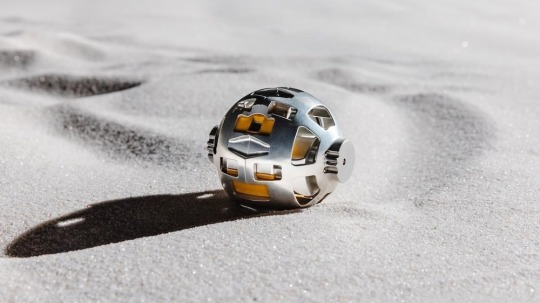
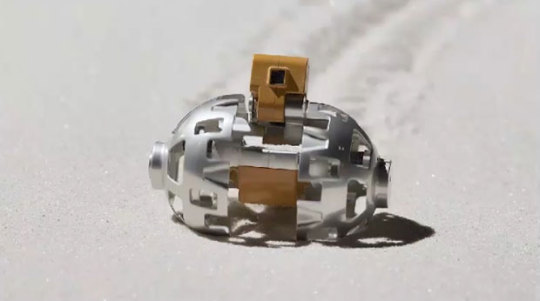

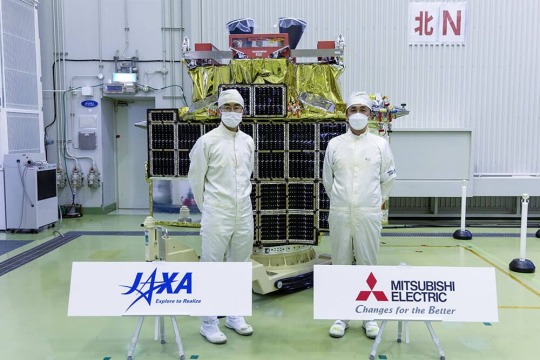
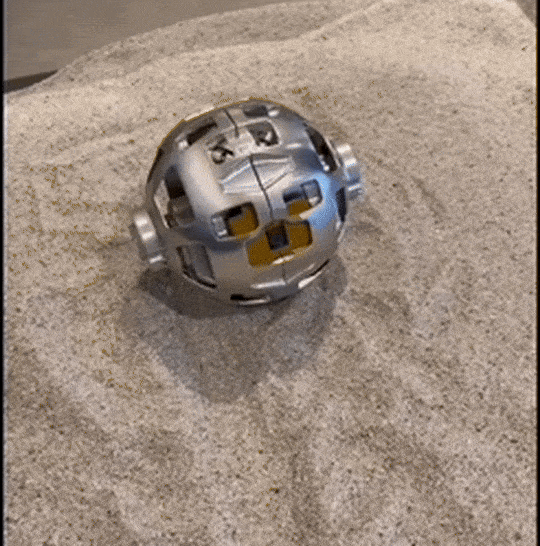
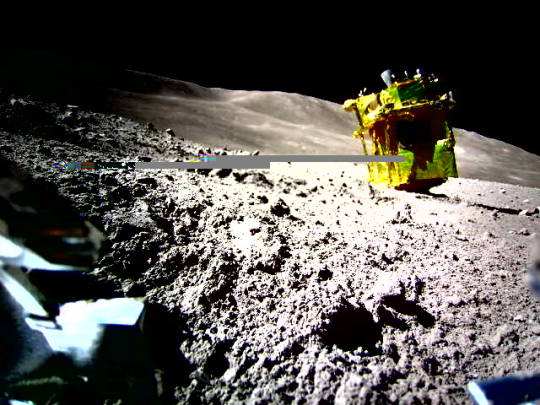
SLIM Lunar Excursion Vehicle 2 (LEV-2, AKA SORA-Q) by Tomy, JAXA, Sony Group, and Doshisha University (2023). The Smart Lander for Investigating the Moon, or SLIM (final photo), was launched from Japan on September 6 2023, due to make a precision lunar landing on January 19 2024. It will deploy LEV-2, an 8cm diameter, ball-shaped, transforming robot. Once on the surface of the moon, the robot splits, expands left and right, and a reaction trail pops out in a vehicular configuration. The wheels are mounted on an eccentric axle able to run in two modes, 'butterfly running' or 'crawling running'. The LEV-2 will be released from the lander 1.8 metres above the lunar surface, and begin rolling around to capture SLIM's landing and the surrounding area. LEV-2's battery is only expected to last about two hours.
"SORA-Q looks something like a metallic Wiffle ball and takes its name from sora, which means “sky” in Japanese; the “Q” is a homonym for the Japanese word meaning “sphere.” As the dust settles, SORA-Q will unfold like a Transformer: the sphere will split in half, exposing a pair of cameras and dividing its two hemispheres into wheels. In the case of M1, mission controllers will remotely instruct their SORA-Q to turn toward the main lunar lander and transmit images back to Earth." – A Mini Moon Rover from the Toy Company That Created Transformers, by Matt Alt, The New Yorker.
"We designed the vehicle to be a spherical object with expandable wheels and a stabilizer using the transforming technologies for toys. Moreover, we adopted the robust and safe design technology for children's toys, which reduced the number of components used in the vehicle as much as possible and increased its reliability." – Hirano Daichi, Palm-Sized Lunar Excursion Vehicle 2 (LEV-2).
In 2023, Tomy released a retail model, called the Sora-Q Flagship Model. It has the same transformer abilities, and can be remotely controlled with a smartphone app.
UPDATE: The Tomy LEV-2 / SORA-Q rover successfully returned this incredible image of the SLIM lander nose down on the Moon (final image).
55 notes
·
View notes
Link
Tokyo (AFP) Jan 22, 2024 Japan switched off its Moon lander almost three hours after a historic touchdown to allow for a possible recovery of the craft when the sun hits its solar panels, the space agency said Monday. With its unmanned Smart Lander for Investigating Moon (SLIM) mission - dubbed "Moon Sniper" for the craft's precision landing capabilities - Japan became the fifth country to achieve a soft lunar lan
10 notes
·
View notes
Text
ギミック満載。地球人の涙を誘った小型探査機SLIMがトミカになったぞ | ギズモード・ジャパン

・tomica PREMIUM × SORA-Q|トミカ|タカラトミー
以下引用
着陸しやすい場所ではなく、着陸したい場所に降り立つための高精度着陸技術を実証するために打ち上げられた小型探査機「SLIM(Smart Lander for Investigating Moon)」。 月面に降り立ったのはいいけれど、ひっくり返っていたり、太陽電池発電ができないから自ら休眠状態に入るも8日後に復活したりと、ドラマチックな展開を見せてくれたのは記憶に新しいですよね(目を覚ましたSLIMの周りにあった岩石に、イヌの名前が付けられたのも楽しい思い出です)。 SLIMにはSORA-Qという世界最小、最軽量の月面探査ロボットも搭載されていて、着陸後の映像を撮影することに成功しています。SORA-QはタカラトミーとJAXA、ソニーグループ、同志社大学の共同開発によって生まれたオモチャ(かなりの意訳)というのも話題になりました。 SORA-Qは一般販売されていますが、お値段は2万7500円。動かしながらガッツリ遊びたい人以外にはちょ〜っとお高いかな、と躊躇している人もいるでしょう。 そこで朗報。タカラトミーからSORA-QとSLIMのトミカが登場します!
ギミック付き小型探査機セット爆誕
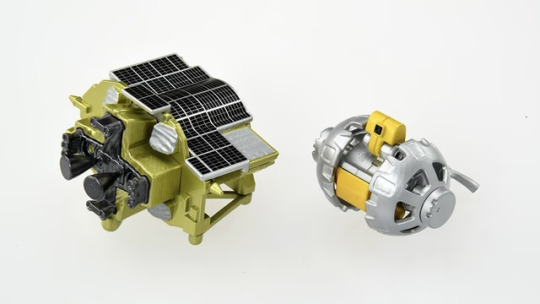
「トミカプレミアム SORA-Q&SLIM」は、月面を模した台座が付いてきます。

SORA-Qはギミック付きで、スタビライザー可動アクションやカメラも可動。
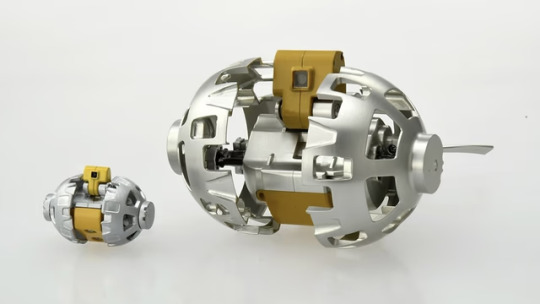
バタフライ走行も再現されています。


お値段は2,750円。受注生産なので予約しないと手に入りません。受注期間は5月31日23時59分まで。
4 notes
·
View notes
Text
Waiting to hear if Japan's SLIM (Smart Lander for Investigating Moon) actually landed. It reached 0 altitude and they sat waiting for a signal for a while, but now the livestream is literally a "Please Stand By" screen with tinkly music. All they need is a little cartoon of the lander with a bandage and little swirlies around its head.
3 notes
·
View notes
Text
Japan will make moon-exploration history in the middle of next month, if all goes to plan. The Japan Aerospace Exploration Agency (JAXA) announced today (Dec. 5) that it's targeting Jan. 19 for the lunar landing of its robotic SLIM ("Smart Lander for Investigating Moon") spacecraft. The newly revealed plan calls for SLIM to begin its descent toward the moon on Jan. 19 around 10 a.m. EST (1500 GMT; 12 a.m. on Jan. 20 Japanese Standard Time). Touchdown — which would mark the first-ever soft lunar landing for a Japanese spacecraft — is scheduled to occur about 20 minutes later. The 8.8-foot-long (2.7 meters) SLIM probe launched atop a Japanese H-2A rocket along with an X-ray space telescope called XRISM on Sept. 6. XRISM deployed into low Earth orbit, but SLIM began making its circuitous, fuel-efficient way to the moon. If all goes smoothly, SLIM will enter lunar orbit on Christmas Day, then spend nearly a month prepping for its technology-demonstrating touchdown attempt. Success would make Japan just the fifth nation to put a probe down on the moon, after the Soviet Union, the United States, China and India. This landing could also open doors for even more ambitious exploration feats down the road.
Conitnue Reading.
63 notes
·
View notes
Text
Japan Moon lander survives lunar night
26 February 2024


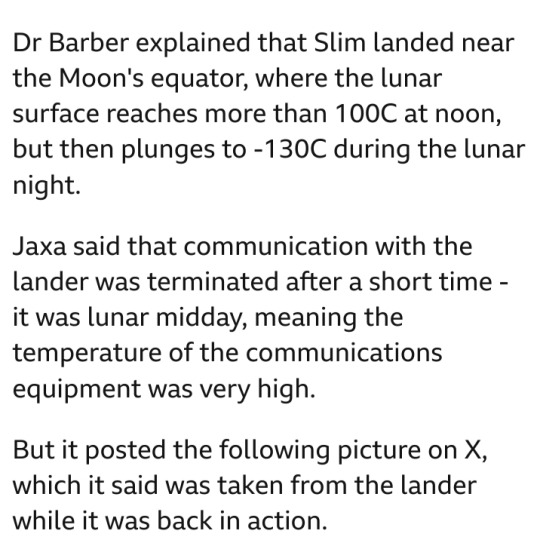

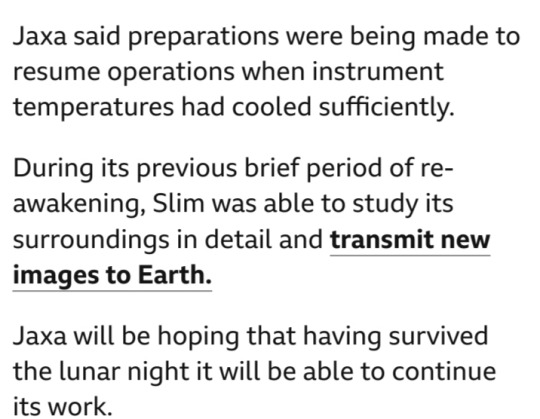



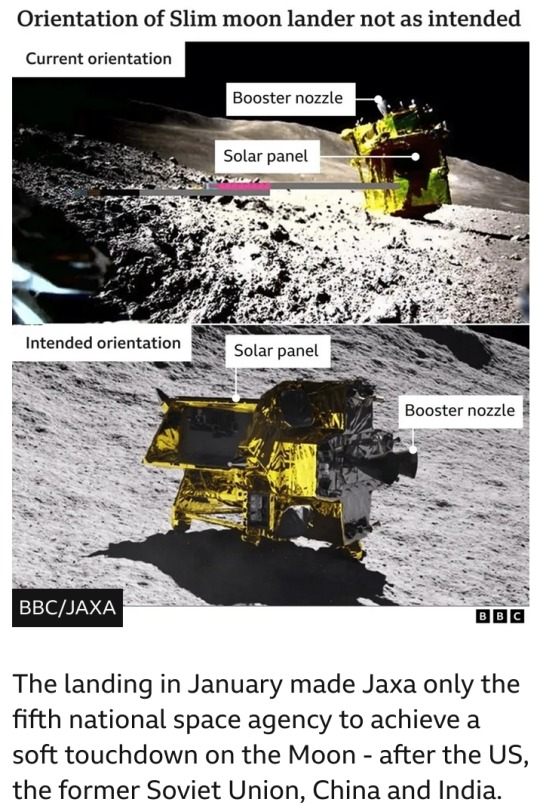

youtube
Japan Moon lander survives lunar night | BBC News
27 February 2024
Japan's Moon lander has survived the harsh lunar night, the sunless and freezing equivalent to two Earth weeks.
"Last night, a command was sent to #SLIM and a response received," national space agency Jaxa said on X.
The craft was put into sleep mode after an awkward landing in January left its solar panels facing the wrong way and unable to generate power.
A change in sunlight direction later allowed it to send pictures back but it shut down again as lunar night fell.
JAXA said at the time that Slim (Smart Lander for Investigating Moon) was not designed for the harsh lunar nights.
#JAXA#SLIM#Smart Lander for Investigating Moon#moon lander#moon#earth#thermal control#odysseus moon lander#Intuitive Machines#space agency#lunar night#Japan Aerospace Exploration Agency#Multi-Band Camera (MBC)#Shioli crater#Youtube
3 notes
·
View notes
Text
NASA SPACECRAFT SHOOTS JAPANESE MOON LANDER WITH LASER
Futurism – The Byte By Victor Tangermann August 9, 2024 NASA’s Lunar Reconnaissance Orbiter has been shooting lasers at Japan’s Smart Lander for Investigating Moon (SLIM) in an attempt to hit a retroreflector mounted right beneath the lander’s solar panels. This tiny, dome-shaped device called a Laser Retroreflector Array is a surprisingly simple contraption with an important job. It’s designed…
0 notes
Text
NASA JAXA Bounce Laser Beam Between Moons Surface and Lunar Orbit
NASA’s LRO (Lunar Reconnaissance Orbiter) has twice transmitted a laser pulse to a cookie-sized retroreflector aboard JAXA’s (Japan Aerospace Exploration Agency) SLIM lander on the Moon and received a return signal. As LRO passed 44 miles above SLIM (Smart Lander for Investigating Moon) during two successive orbits on May 24, 2024, it pinged the lander […] from NASA https://ift.tt/JTi5Avy
0 notes